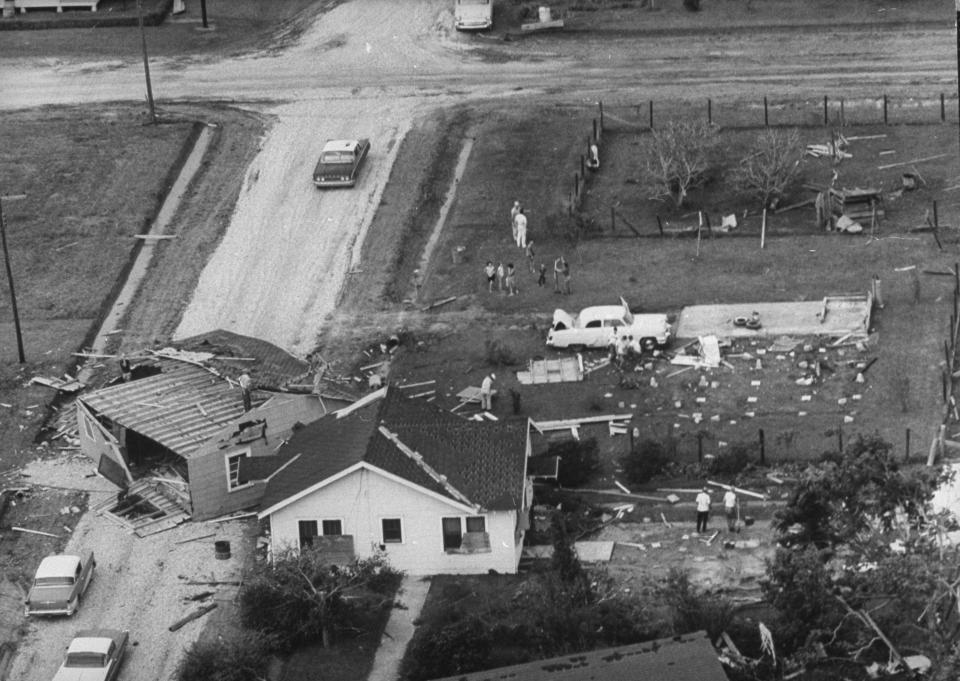Harvey by the numbers
It was as if the entire Mississippi River had been diverted from its course, lifted into the sky and dumped on a sprawling modern metropolis, with all its vulnerable infrastructure of roads, bridges, sewers, light rail, electrical power and fiber-optic cables, its malls and office buildings, living rooms and kitchens, refineries and pipelines.
The wind damage from Harvey, although far from negligible, will likely be dwarfed by the inches and feet of rain piling up on Houston and the surrounding counties. It is still much too early to put a dollar figure on the cost, and the casualties are still being counted. But here is a brief statistical profile of Hurricane Harvey, as of roughly noon Monday.
260 billion: Rough estimate of gallons of rain that have fallen on the city of Houston so far, assuming an average of 24 inches across 620 square miles. That’s approximately as much water as the Mississippi River carries past New Orleans in 16 hours.
56,000: Number of calls to 911 within 24 hours as of Sunday night, according to Houston Mayor Sylvester Turner.
50 inches: Maximum expected rainfall total from Harvey in some parts of Texas. The average annual rainfall at Bush Intercontinental Airport in Houston is 49.76 inches.
130 mph: Harvey’s maximum sustained wind speed at the time of landfall on Aug. 25.
30,000: Estimated number of people who will be forced from their homes as a result of Hurricane Harvey, according to the Washington Post.
82,000: Number of homes in Houston area reportedly without electricity as of Sunday night.
3,000: Number of National Guard and State Guard members deployed to Texas as of Sunday, with Gov. Greg Abbott promising to send an addition 1,000 National Guard troops to Houston Monday.
2,000: Number of people who’ve been rescued from flooding in Houston, according to Houston Police Chief Art Acevedo, who said Monday morning that 185 critical requests for help were still pending in the city.
$667 million: Amount of funding the Trump Administration seeks to cut from grants to the Federal Emergency Management Agency — including FEMA’s Pre-Disaster Mitigation Program — to help pay for the construction of a border wall.
16: Percentage of the National Oceanic and Atmospheric Administration’s overall budget the Trump Administration has proposed cutting.
40,000: Estimated number of Hurricane Katrina evacuees who had permanently resettled in the Houston area as of 2015, according to the Houston Chronicle. Of the more than 1 million people who fled Louisiana and Mississippi before and after Katrina’s catastrophic landfall in 2005, up to 250,000 were relocated to Houston.
56: Years since the last Category 4 hurricane, Hurricane Carla, made landfall in Texas in September 1961. Before that, the only other Category 4 hurricane to make landfall near the Texas Coastal Bend was in August 1886.

Read more from Yahoo News:


